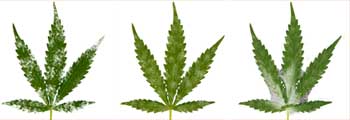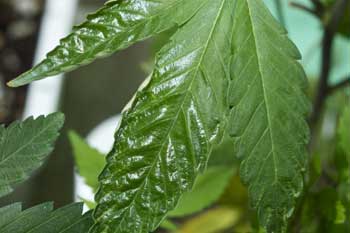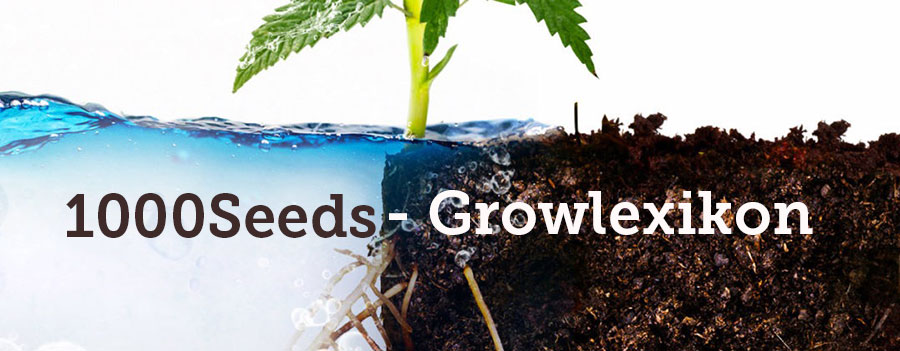When growing cannabis, whether indoors or outdoors, various problems can occur. Mostly pests, fungal diseases, deficiencies or mistakes in the supply are behind it. As a result, the cannabis plants develop poorly or are delayed in their development, or it can even go so far that the entire grow fails, i.e. plants die as a result.
Fungal spores, for example, are always present in the air, all over the world. A plant infested by insects or fungi can infect all other plants, whether they are pests such as spider mites, whitefly and thrips, or fungal diseases such as fusarium or botrytis. With the help of our Checklist for pests, you can find out which parasite it is and how to combat it effectively.
The Checklist deficiency symptoms and diseases in the grow helps you to determine the cause of changes or signs of disease and gives information on countermeasures.
Prevention is the best way
The most important step to avoid diseases, poor development and losses is cleanliness in the grow room. The grow room should always be completely closed so that the climate inside can be controlled ideally and reliably.
The floor of your grow box should always be clean. Pests or pathogens like to hide in dusty and dirty corners and edges. Make sure that all materials and tools you use are always clean. The cleaner the grow environment, the less risk there is of problems. Always use a separate set of garden tools and shears and don't use the ones from your garden or your neighbour's hedge trimmers 😉 Dirty tools can promote and accelerate plant-to-plant transmission of certain pathogens.
The best way to disinfect tools is with 90% alcohol or by soaking them in boiling hot water (if your tool is heat stable). A solution of chlorine bleach and water is also used to disinfect floors, tools and objects in the growroom. In addition, you should always wash your hands when touching the plants or possibly even seeds. Do not touch seeds with your hands, use disinfected tweezers.
Use grower soil only once and do not reuse it, the same goes for coco substrate, even if you can reuse it, it is so cheap that it is better and safer not to. Diseases and pests can spread and will never be properly controlled if you keep messing around with the same soil. In addition, indoor soil often bakes out, leaches out or accumulates mineral salts. So it is important to always use a new one.
If you want to avoid diseases and pests, it is also necessary to maintain and regularly control the important parameters such as humidity, temperature and pH-value. Cultivation parameters and to control them regularly: such as humidity, temperature, pH-value. For this purpose, there are easy-to-use and very useful tools or professional climate control elements. A good climate that is optimal for cannabis plants is the key to indoor growing success. In a suitable climate, pests and diseases are less likely to spread and harm the plants. How you control, monitor and ensure the climate in the cultivation room can learn here.
Avoid pets in your grow room, even if it is quite funny and some pets seem to like the plants as much as you do. With the thick fur of dogs and cats, diseases or even pests are quickly and frequently brought into the grow box.
If you use (foreign) cuttings for your grow, make sure they are healthy and show no signs of disease. Slight symptoms in the cuttings can turn into a bigger problem in the course of the grow and in the end no really good results will come out of it.
What you should also do: strap a filter in front of the supply air, these are available for the boxes or you can use a nylon stocking for this, so that e.g. spider mites or other pests are prevented from getting to the cannabis plants from outside.
Do not store soil, used planters, rubbish bins, litter trays, open water containers and preferably as few textiles in any form as possible in the room where you are growing or your grow box is located, preferably none at all, i.e. no curtains and no nice flokati carpet. If the curtain has any safety aspects for you, it is better to leave it on and wash it regularly and hot.
If a problem occurs in your grow and you notice changes in your plants, they should be analysed and resolved quickly before it spreads and causes major damage. If the problems with the cannabis plants are not resolved by the time flowering begins, expect visibly reduced yields. The greater the damage to the cannabis plant, the much greater the loss in yield. In other words, a sick, measly plant will only ever produce small, measly buds, if any at all.
But there are a few things you can do if your cannabis plants are affected by pests, diseases or deficiencies. You can find out more about this in our grow encyclopaedia.
Problems and diseases in cannabis cultivation
- Checklist Diseases and Deficiencies
- Checklist pests
- Reset after a massive pest infestation
- Heat stress and what to do about it
- Ladybirds as valuable beneficial insects in cannabis cultivation
- Spider mite: recognise and control
- Thrips: recognise and control
- white fly & fungus gnat
- Leaf, scale & mealybugs
- Cicada & leaf miner
- Falling sickness - causes and prevention
- Mould infestation
- powdery and downy mildew
- Botrytis in cannabis
- Over / under fertilisation, nutrient deficiency
- 10 steps to solve problems

Growshop - Plant protection, climate control







